What is Inktober
I found an interesting international challenge “Inktober” for artists online, which was created in 2009 by illustrator Jake Parker from America. And since then, he has inspired thousands of people around the world to take part. The name of the challenge consists of the words ink – this is ink, tober from october – October. The meaning of the event is that every day for a month, artists draw a lineart with black and white ink (black ink, the same isograph or rapidograph). And they post their drawings on the Internet with the hashtag #INKTOBER
Initially, Inktober was conceived as a personal project for Jake in order to improve his ink skills and create a habit of drawing every day. Over time, the challenge has spread around the world and has become a global movement in which artists of all levels participate, from beginners to professionals.
Daily drawing is not just an interesting task, but an important tool for improving artistic skills. Regular practice helps strengthen the hand, develop a sense of composition, improve the understanding of light and shadow, and stimulates creative thinking. Consistency in drawing gives tangible results and helps to overcome the fear of a blank sheet. And most importantly, a habit of drawing every day is developed, which leads to the formation of your own unique style.
Inktober rules
The rules for participating in Inktober are simple:
- Draw one ink drawing every day for the month of October
- Publish the drawing online (on social media or personal platforms)
- Use the hashtag #Inktober so that other participants can see your work
- Repeat the process every day for a month
While Inktober originally required only ink, today many artists use other materials such as pencils, markers, or digital tools, while still maintaining the focus on lines and line art. The key is to maintain the discipline of drawing every day.
Benefits of Drawing Every Day
If we do something every day, we learn and improve in it. Daily drawing helps improve hand control, develop a sense of composition and shading, and increase confidence. Here are some key aspects that make daily drawing useful for skill development:
- Discipline: Consistency is the key to improving in any art. Daily practice forms a habit that makes drawing easier over time.
- Technical development: Working with ink helps develop a sense of form, depth, and contrast. Participants learn to use minimal tools to create complex images.
- Creativity development: The constraints of Inktober – the need to draw every day and stick to certain themes – stimulate creative thinking. Artists are forced to come up with new ideas in a short time.
- Progress: Even after a month of daily practice, an artist can see a significant improvement in their skills, which inspires them to continue drawing.
Inktober is not only a great opportunity for self-improvement, but also a way to become part of a large international community of artists who inspire and support each other in this creative journey.
What is Lineart
Lineart is the art of creating images using lines without using color, which is ideal for ink drawings. A bit like Herluf Bidstrup’s comics or pen drawings on a piece of paper while talking on the phone.
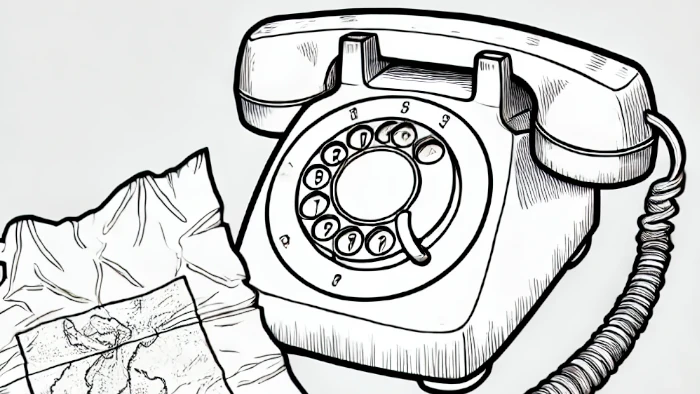
Lineart is one of the oldest forms of drawing, dating back to cave paintings. The main idea is to convey an image through lines, without using color or shadows. Lineart allows you to create complex images with minimal resources. Even a few lines can convey movement, form, and emotion, which makes this technique especially attractive to artists who value minimalism.
Lineart is the basis for creating black-and-white illustrations in comics and graphic novels. It is also widely used in animation, where simple lines help set the dynamics and shape of characters. Modern digital artists actively use lineart on graphic tablets and software such as Adobe Illustrator, Procreate, Inkscape. This allows you to work with clean lines and easily edit image elements.
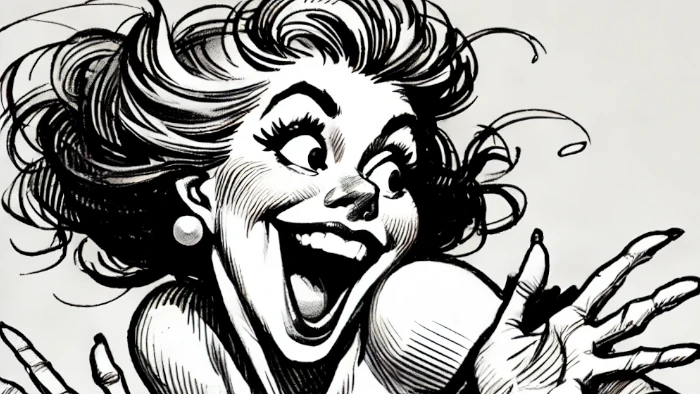
Inktober has become a kind of holiday for line art fans. Artists create daily ink drawings, where lines play a key role in creating vivid images. Even if you have never drawn with lines before, why not try yourself in a new format of creativity? Line art focuses on form and composition, without being distracted by colors. This allows artists to focus on the technical side of the drawing and experiment with different line thicknesses. Interestingly, line art is often used as a meditative practice, since the simplicity of the lines helps to relax and focus on the process of drawing, and not on the final result. And even people without art education or skills can draw cute cats using simple lines. And if you are a fan of tattoos, you can create an image design for yourself or your friends.
Basic Lineart Techniques
Instead of using color and shading, the artist works with varying line thickness and saturation to convey depth and volume.
Tips for Improving Line Art
- Pressure Control: When drawing with ink or pen, the pressure you apply to the tool directly affects the thickness of the line. Practice varying the pressure to make your lines more vibrant and expressive. Light, thin lines can convey delicate details, while thicker lines can convey important contours.
- Line Variety: Experiment with line thickness and length to create a variety of textures and shapes. This can be achieved by combining short, sharp lines with long, flowing strokes.
- Line Cleanliness: Keeping your lines clean and neat is essential to successful line art. Constant practice helps to make your lines more confident and controlled.
- Pre-Ink Sketches: Before you begin your final ink drawing, it is helpful to make a light pencil sketch. This will help avoid mistakes and keep the composition clean.
- Using Repeating Lines: Line art often involves using repeating lines to create shadows and textures. Practice hatching and cross-hatching to add depth and dimension to your images.
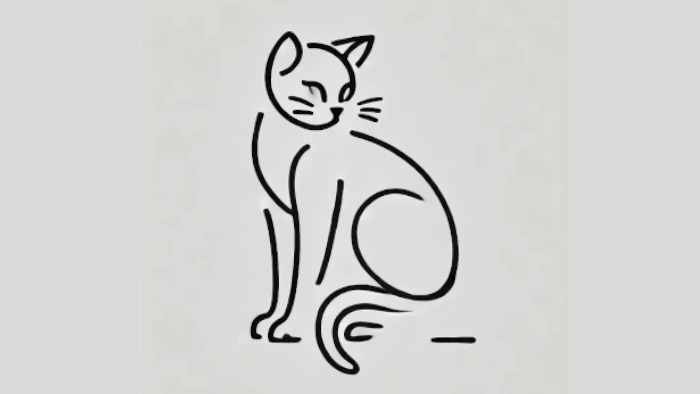
Popular styles and approaches to line art
- Minimalist Line Art: This style focuses on simple lines without unnecessary details. The lines are clean, minimal, and create images with a minimum number of strokes. It is great for images where simplicity and expressiveness are important.
- Detailed Line Art: Here, the artist pays attention to many small details and textures. The use of thin lines allows for texture, shadows, and even light to be added, creating rich and saturated images.
- Heavy Outline: In this style, the lines are thick and powerful, highlighting the main shapes and contours of the image, giving it a special expressiveness. This style is often used to create striking and memorable drawings.
- Hatching and Crosshatching: Hatching is a technique in which a series of parallel lines are created to create shadows. Crosshatching adds depth by layering additional lines at different angles.
By using line art during Inktober, artists can develop their line skills, experiment with different techniques and tools, and find their own style that will make their work stand out from the crowd of participants in this creative challenge.
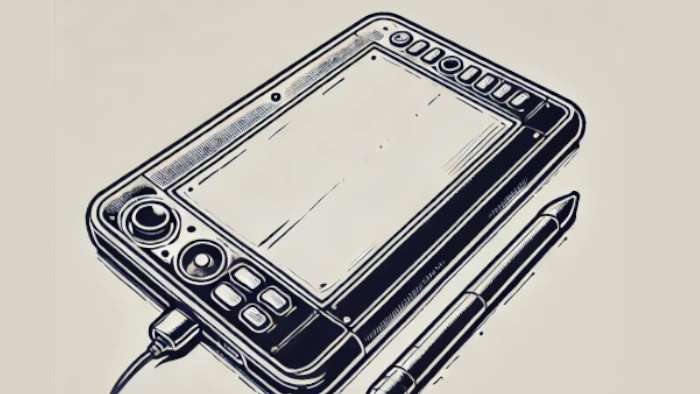
How to draw line art
- Pens and brushes: Traditional pens (like calligraphy pens) allow you to control the thickness of the line depending on the pressure. You can also use ink brushes, which create smooth and flexible lines.
- Pens with different tips: Fineliner pens or liners such as Micron or Staedtler are popular for line art. These pens offer different thicknesses (from 0.05 mm to 1 mm and more), which allows you to vary the lines depending on the detail.
- Digital devices: In modern conditions, many artists prefer digital tablets such as Wacom or iPad with Apple Pencil, and programs such as Procreate or Adobe Illustrator. Digital line art allows you to easily experiment with line thickness and correct mistakes.
My favorite way to do line art is with an isograph, which is a technical pen that is filled with ink. The isograph has different line thicknesses, my favorite is 0.5 mm.
Why am I participating in Inktober?
Inktober is not just a drawing challenge, it is a unique opportunity to develop your skills and discover new creative horizons. For me, it is primarily motivation and an opportunity to meet artists who are currently active in the profession. I also want to learn to think less about the result and focus more on the process, so as not to worry that it will turn out badly. Just draw for my own pleasure.
In terms of technique, I am looking for new elements of my style. I am sure that daily drawings will show me the style in which I am most comfortable moving – how exactly I express myself through art. By the way, it is not at all necessary to post everything on the Internet. You can draw in your notebook – this counts. But if you want to find a new audience, then participating in such a challenge is a great chance.
Organizing the daily drawing process is the key to successful participation in Inktober or any other art challenge. Regular practice not only helps to develop skills, but also forms important habits that can be applied in other areas of life. Drawing every day requires planning your time, setting goals, and staying motivated throughout the month.
Time Management Tips for Daily Drawing
- Identify the best time to draw: Find a time when you feel most productive. This could be in the morning before work or school, in the evening after dinner, or even during your lunch break. Choose the same time each day to draw – this will help you develop a habit and reduce the risk of skipping.
- Prepare everything in advance: Make sure all your drawing tools are at hand. Have paper, pens, or a tablet ready so you don’t waste time looking for them. A clearly organized space makes the process faster and more enjoyable.
- Use a timer: Set a time limit for your drawing. In the first few days, you can start with 10-15 minutes. And then move on to drawing for 30-60 minutes. This will help you avoid perfectionism and reduce the pressure of having to draw something perfect every day. The result will be more natural and the process will be less stressful.
- Divide the process into stages: If you are short on time, break the drawing process into several stages. You can spend the morning creating a sketch, and the evening working on the details. This will help you avoid getting overwhelmed and maintain your rhythm.
- Plan your weekend: Don’t forget to give yourself time to rest. Sometimes it’s important to allow yourself a break to avoid burning out. For example, use Sunday to review your work and plan new drawings for the next week.
Where to get ideas for drawings
It can be difficult to come up with something new and original every day. I look for inspiration on social networks and online exhibitions. I also find it helpful to keep a diary of ideas, where I write down themes for each day of the art challenge (for example, animals, portrait, flowers, cars, nature, etc.). You can make series of drawings – for example, I choose the theme “food” and draw a new dish every day. We also check trends, what people are drawing now and what is most discussed: this way you can find relevant new ideas. Comics, black and white graphics, portfolios of illustrators and artists on the Internet – all this is available for free and gives a boost of creativity. And new technologies, of course! Artificial intelligence (AI), neural networks. We ask “make a picture with thirty ideas for linearts for Inktober on the theme of the future” and in a couple of seconds we get sketches that can be combined and creatively used in our works.
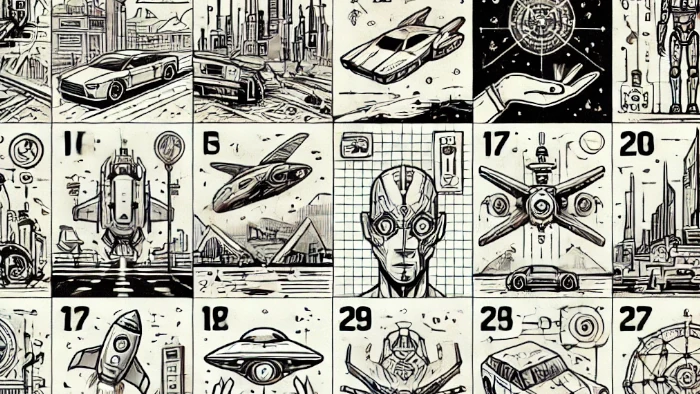
Organizing a daily drawing process is not only about discipline, but also about pleasure. By finding the right approach and establishing simple habits, you can successfully complete the entire challenge, improve your skills and, most importantly, enjoy the process! Turning a month-long art challenge into a pleasant vacation.
My line art is in the gallery.